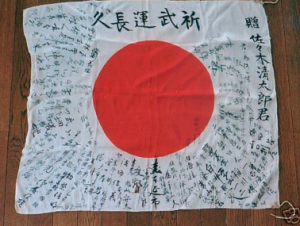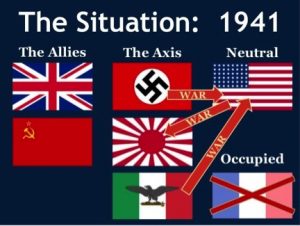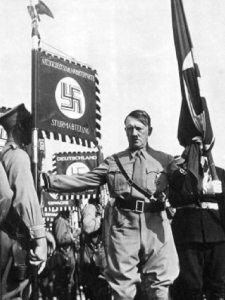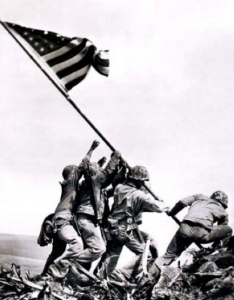Pearl Harbor and the Flags of Worldwide War
John M. Hartvigsen
Originally called the Great War, World War I resulted in enormous numbers of war dead; however, its battlefields were primarily in Europe continuing to the eastern Mediterranean and the Middle East. Not living up to the promise of “the War to End all Wars,” WWI actually set the stage for a worldwide conflict that earned the title World War.
Despite the obvious escalation of conflict in Europe and Asia, Americans showed a strong reluctance to be “pulled into foreign wars;” the attack on Pearl Harbor changed everything as the Stars and Stripes joined the flags of the world’s nations.
Never before or since has the United States committed to the footing of total war demanding complete dedication not only for the military but for the civilian population.
Flags too joined the conflict for the United States and its allies as well as for the enemy nations or Axis Powers. Many examples sending flags to war could be related, but three examples tell a story repeated again and again to support for the efforts of war. The vexillological experiences of World War II demonstrate the impact of flag for both good and evil.
A National Socialist Party (NSDAP) flag carried during the unsuccessful coup when the Hitler attempted to overthrow the Bavarian Government became soaked with the blood of the flag bearer and other Nazi rebels. Christened “die Blutfahne” or “the Blood Flag,” it became a sacred icon of the Third Reich. Hitler held folds of the “Blutfahne” in one hand while consecrating other flags and banners carried by soldiers of National Socialist Germany.
The flag of the NSDAP, which became the flag of the German Third Reich, also became one of the most hated banners of world history. While we usually call its central emblem a swastika, Nazi’s called it “das Hakenkreutz” or hooked cross. The swastika is in reality of ancient and revered symbol of many civilizations and does not deserve the hated reputations that Hitler and his followers have given it.
 Soldiers of the Japanese Empire carried small flags bearing the rising sun emblem of reminding them of their duty to the Emperor and nation. Allied servicemen capturing Japanese soldiers took these flags as war souvenirs.
Soldiers of the Japanese Empire carried small flags bearing the rising sun emblem of reminding them of their duty to the Emperor and nation. Allied servicemen capturing Japanese soldiers took these flags as war souvenirs.
The rising sun device on Japanese flags predated the Second World War by centuries and continues as the nation’s flag. The flag of an enemy becoming the flag of a ally.
The most positive and iconic image for the United States war effort was the flag rising on Iwo Jima. The Pulitzer Prize winning photograph is actually the second raising of Old Glory on Mount Suribachi. Marines raised a larger flag that photographer Joe Rosenthal luckily captured on film. The picture raised the hopes of war weary American that final victory would come.
The impact of flags, experienced in the Second World War continues today. Flags are more than simply pretty pieces of cloth.



